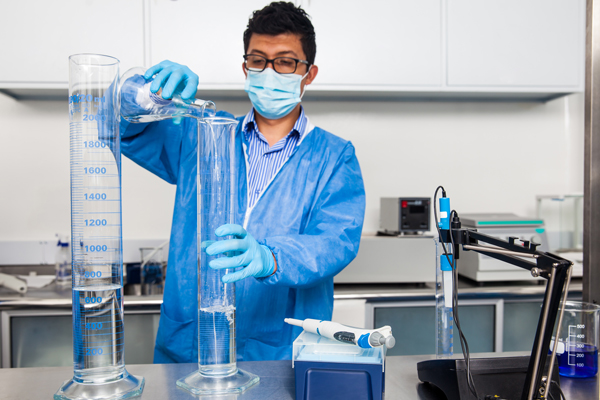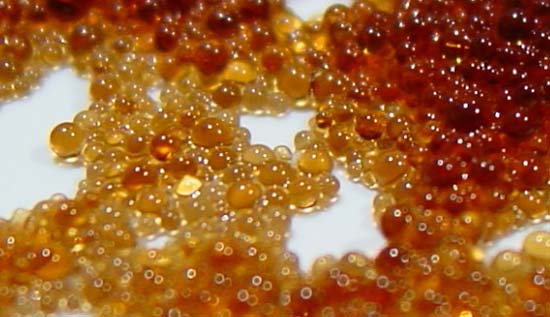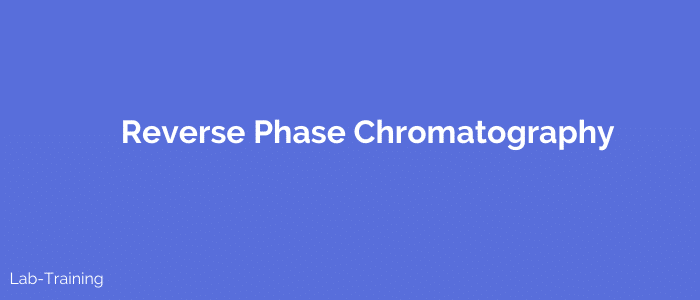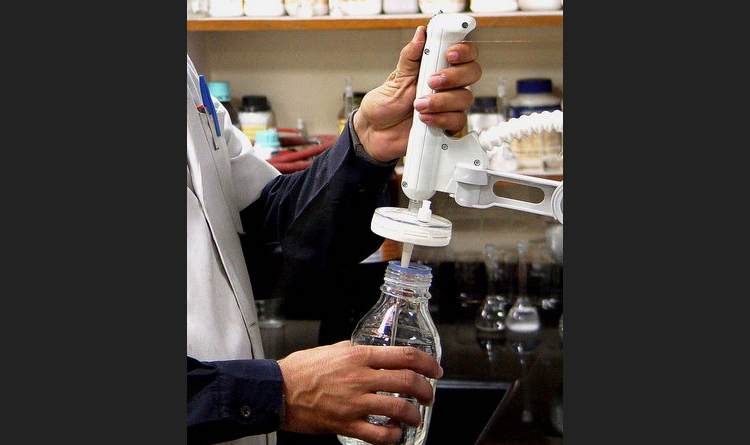Role of Buffers in Reverse Phase HPLC Separations
Reverse phase separations of polar and ionizable compounds requires precise control of pH using buffers. This ensures reproducible retention times and freedom from tailing of peaks retention times and freedom from tailing of peaks. Buffering also prevents interactions between analytes and residual silanols on the stationary phase.
Reverse phase separations can be conveniently carried out in the pH range 2.0 – 7.5. However, reproducibility of results is achieved if pH is maintained within +/- 1 pH unit of the pka value of the buffering ion. For reference the useful ranges of commonly used puffers are given here :
| Buffer | pka at 250C | pH range |
| Phosphate | 2.1 | 1.1-3.1 |
| 7.2 | 6.2 – 8.2 | |
| 12.3 | 11.3 – 13.3 | |
| Acetate | 4.8 | 3.8-5.8 |
| Borate | 9.2 | 8.2-10.2 |
| Triethylamine | 10.8 | 9.8-11.8 |
Factors governing choice of buffers
UV cut-off values
Buffer choice should be based on transparency at the wavelength of detection. The UV cut-off of buffers commonly used lie from about 230 nm to below 200 nm.
Compatibility with mobile phase
Buffers should be compatible with the mobile phase. These should not precipitate as precipitate formation can cause irreparable damage to the pump and the chromatography column.
Buffer choice with the LC – MS systems
Choice of buffers is limited for LC – MS applications as the buffer should have high volatility. Phosphate buffers are not suitable for this purpose. Commonly used are ammonium salts such as ammonium acetate pH 2.0 – 3.8, ammonium formate pH 2.7 to 3.7 and ammonium carbonate pH 6.6 to 8.6.
Buffer concentration
Increasing buffer concentration leads to faster elution of polar molecules. This can be used to resolve co-eluting peaks but higher concentrations increase viscosity resulting in high column back pressure.
Silica-based columns tend to dissolve even below pH 7.0 and solubility becomes an issue when mixed with an organic solvent at high concentrations. Concentrations below 0.005M generally makes buffer ineffective. A concentration range of 10 to 50 mM is normally adequate for most applications. As a general rule not more than about 50% by volume of organic solvent should be used.
Recommended Buffer preparation sequence
- Dissolve the powder and make up the volume to the mark.
- pH adjustment should be made before mixing with the organic medium
- Filter through a 0.45 μm filter for analytical HPLC and 0.22μm for the UHPLC applications
Essential precautions when using buffer solutions
- Buffers are a good media for growth of micro- organisms. Prepare fresh solutions as far as possible and set short expiry periods.
- After using buffers flush system with same proportion of water – organic solvent mixture followed by pure water and then the storage solvent. This is necessary to prevent buffer salts from depositing on pump components and inside columns if the system remains out of use for long periods
Now you have understood the importance of buffer control in reverse phase separations please do leave your questions and comments on the content of this article.





Dear Dr Deepak Bhanot,
I am writing to you in order to ask for some details about your World Support Program.
I need some information about determination of antibiotics (Macrolids) by HPLC UV-detector.
Could I ask you to guide me?
I look forward to hearing from you.
Yours faithfully
Dear Nafise,
Macrolides have been determined commonly in different foods with the help of UV-Vis diode array detector simultaneously at different wavelengths.As per your requirements and applications you have to refer to some chromatographic journals to develop your own test conditions.
Regards
sir,
how can i separate my isolate from buffer (triethanolamine)which is viscous liquid recovered from hplc
My advice would be to use some other buffer medium as viscous media will result in shortening the useful life of the column. The buffer media should be free flowing.
it wasvery useful. Pls continue to write.